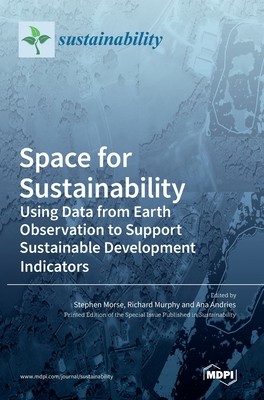
- We will send in 10–14 business days.
- Publisher: MDPI AG
- ISBN-10: 3036542655
- ISBN-13: 9783036542652
- Format: 17 x 24.4 x 1.9 cm, hardcover
- Language: English
- SAVE -10% with code: EXTRA
Space for Sustainability (e-book) (used book) | bookbook.eu
Reviews
Description
Achieving the 17 UN Sustainable Development Goals (SDGs) requires accurate, consistent and cost-efficient data. The papers in this book set out some of the frontiers regarding the use of Earth Observation (EO) data derived from satellites to help populate sustainable development indicators. It sets out the current challenges and opportunities in the field along with some case studies from around the world illustrating applications, such as exploring the use of EO for tracking SDG indicators using population grids to assessing resilience to extreme events such as flooding. Likewise, it covers diverse approaches that offer insights and guidance on environmental land management, desertification and support for evaluating education from space.
EXTRA 10 % discount with code: EXTRA
The promotion ends in 8d.19:22:45
The discount code is valid when purchasing from 10 €. Discounts do not stack.
- Publisher: MDPI AG
- ISBN-10: 3036542655
- ISBN-13: 9783036542652
- Format: 17 x 24.4 x 1.9 cm, hardcover
- Language: English English
Achieving the 17 UN Sustainable Development Goals (SDGs) requires accurate, consistent and cost-efficient data. The papers in this book set out some of the frontiers regarding the use of Earth Observation (EO) data derived from satellites to help populate sustainable development indicators. It sets out the current challenges and opportunities in the field along with some case studies from around the world illustrating applications, such as exploring the use of EO for tracking SDG indicators using population grids to assessing resilience to extreme events such as flooding. Likewise, it covers diverse approaches that offer insights and guidance on environmental land management, desertification and support for evaluating education from space.


Reviews